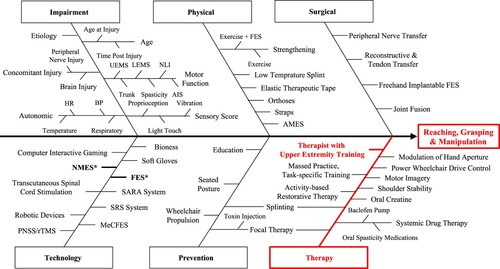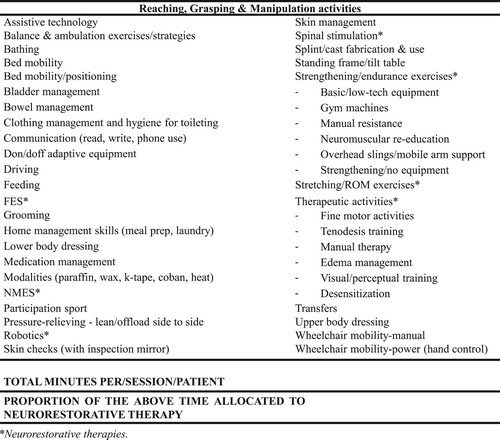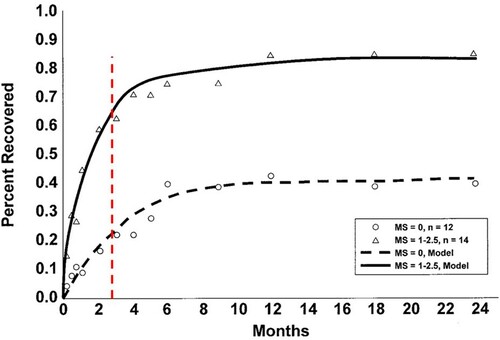Figures & data
Figure 1 Driver diagram for the RG&M Domain. The Impairment Branch is common to all 11 SCI-High Domains. The red items shown in the diagram represent the aim of the indicators. *Thicker black lines on the Technology branch reflect the greater volume of evidence supporting NMES and FES. UEMS: Upper-Extremity Motor Score, LEMS: Lower-Extremity Motor Score, NLI: Neurological Level of Injury, AIS: ASIA Impairment Scale, HR: Heart Rate, BP: Blood Pressure; FES: Functional Electrical Stimulation, AMES: Assisted Movement with Enhanced Sensation, Bioness Inc., NMES: Neuromuscular Electrical Stimulation, SARA System: Smart Assistive Reacher Arm (SARA) System, SRS System: Stimulus Router System, MeCFES: Myoelectrical Controlled Functional Electrical Stimulation, and PNSS/rTMS: Peripheral Nerve Somatosensory Stimulation System/repetitive Transcranial Magnetic Stimulation.

Table 1 Description of the therapeutic constructs underlining the RG&M practices which informed indicator development.
Figure 3 Alphabetical list of therapeutic activities intended to facilitate Reaching, Grasping & Manipulation outcomes. This table was modified from Ozelie et al., 2012Citation73 with feedback from Lyndhurst Centre OTs and PTs and RG&M Working Group Members.

Table 2 Systematic search of outcomes related to reaching, grasping and manipulation.
Table 3 Minimal data set of reaching, grasping and manipulation indicators.
Figure 4 Illustration of the intersection between rehabilitation discharge (red vertical line) and the slope of change in upper extremity motor scores (MS). The red dotted line represents the median rehabilitation length of stay in Canada.Citation74 The recovery timeline graph was adapted from Burns and Ditunno, 2001,Citation71 displaying functional motor recovery in individuals with C6 tetraplegia with an initial MS at the C5 myotome. Solid and dotted black lines depict modeled data resulting from individuals with different motor scores.


